Understanding the Brand Funnel: Strategies and Templates for Accelerated Business Growth
03/04/2025
Branding / Business / Marketing Strategy
A well-structured brand funnel is the key to guiding potential customers from awareness to loyalty—this guide breaks down essential strategies and provides templates for success.
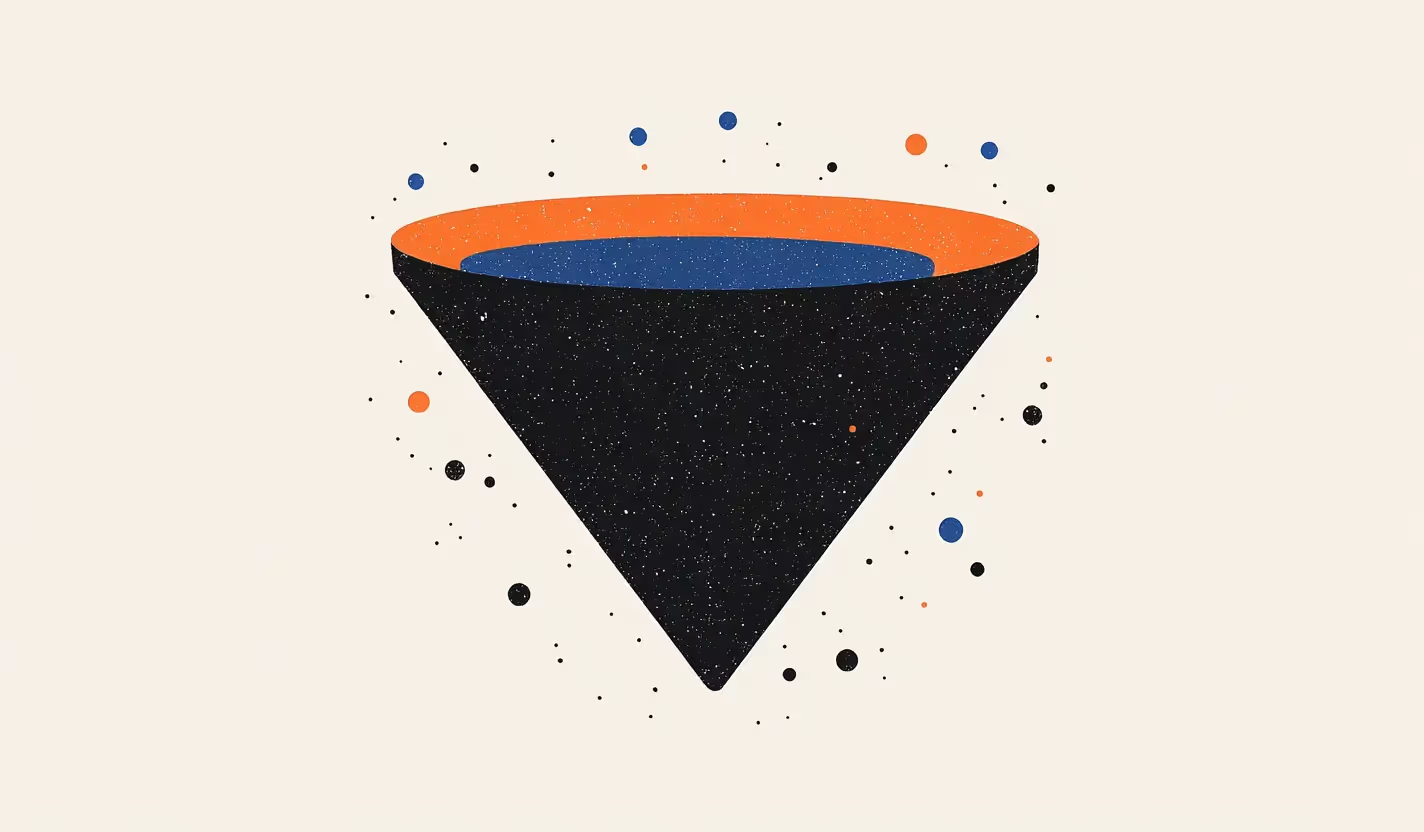
In the ever-evolving landscape of digital marketing, we're swimming in a sea of metrics. From click-through rates to engagement percentages, it's a numbers game that can make or break campaigns. But when it comes to measuring the muscle of your brand, that's where things get murky. Brand performance, with its elusive nature, often gets sidelined, despite being the backbone of your marketing anatomy. Here's the kicker: many brands are pumping dollars into marketing like there's no tomorrow, yet they're skimping on their branding efforts. It's easy to get hooked on those sweet, green metrics that send your dopamine levels soaring. But let's face it, without a solid brand foundation, you're building your empire on quicksand. Enter the brand funnel – a game-changer in the world of brand metrics. This isn't your average marketing tool. It's a sleek, streamlined way to keep tabs on your brand's growth and health. Think of it as your brand's personal fitness tracker, giving you the lowdown on how your brand is performing in the wild. In this deep dive, we're going to unpack the brand funnel. You'll get the inside scoop on what it is, why it's crucial, and how you can wield it to not just measure, but actually turbocharge your brand's growth. It's time to move beyond the superficial glitter of vanity metrics and get down to the real deal of brand building. Ready to revolutionize your brand's journey? Let's get started.
.png)


What is a Brand Funnel?



Alright, let's dive into the heart of the matter: the Brand Funnel.
This isn't just another marketing buzzword to toss around in boardrooms. It's the real deal, a roadmap that guides you through the complex journey of turning the uninitiated into die-hard brand advocates.
The Essence of the Brand Funnel
Imagine the brand funnel as a journey, one that your potential customer embarks on, starting from the moment they hear your brand's name whispered in the digital winds to the point where they're not just customers, but raving fans.
It's a multi-stage odyssey: Awareness, Consideration, Conversion, Loyalty, and Advocacy.
Each stage is crucial, a stepping stone towards building a brand that resonates and endures.
The Digital Age Revolution
In the pre-digital era, brand funnels were more like guesswork, akin to throwing darts in the dark.
But now, in our hyper-connected world, the game has changed.
According to a Salesforce report, 87% of marketing professionals use data to measure their brand's performance, and the brand funnel is their weapon of choice.
It's data-driven, precise, and gives you a clear picture of where your brand stands.
The Anatomy of the Brand Funnel
- Awareness: This is where the magic begins. It's all about making noise and getting noticed. Did you know that a consumer's attention span is now shorter than that of a goldfish, as per a study by Microsoft? That means you've got mere seconds to make an impact.
- Consideration: Now that they know you exist, it's time to woo them. This stage is about nurturing that initial spark of interest. Content is king here – a HubSpot study revealed that 70% of marketers are actively investing in content marketing.
- Conversion: This is where the rubber meets the road. You've caught their eye, now it's time to turn that interest into action. A recent survey by Adobe found that companies with strong web design and UX have seen a 200% increase in conversion rates.
- Loyalty: The journey doesn't end at the sale. Now, you need to turn a one-time buyer into a repeat customer. A study by Yotpo found that loyal customers are five times more likely to repurchase and four times more likely to refer a friend.
- Advocacy: The holy grail of brand marketing. This is where customers become your brand ambassadors. Nielsen reports that 92% of consumers trust recommendations from friends and family over any other type of advertising.
The brand funnel in today's digital marketing landscape is more than a concept; it's a dynamic, living process.
It's about understanding the customer's journey, tapping into their psyche at every stage, and using that knowledge to build a brand that's not just seen but felt.
In the following sections, we'll break down each stage, giving you the tools and tactics to turn this funnel into a powerhouse of brand growth.
Stay tuned, because this is where things get interesting.
The Importance of Branding in Marketing
Let's get real about branding.
In the high-octane world of digital marketing, branding is like the dark horse - often underestimated but packing a serious punch.
It's not just about slapping a cool logo on your product or crafting a catchy tagline.
Branding is the soul of your business, the story that sets you apart in a crowded marketplace.
Branding vs. Marketing: The Eternal Dance
Think of marketing and branding as a classic rock duo.
Marketing is the loud, flashy frontman grabbing the audience's attention, while branding is the soulful guitarist, weaving the melodies that stick in your mind long after the show's over.
A report by Lucidpress states that consistent brand presentation across all platforms can increase revenue by up to 23%.
That's the power of branding - it's the rhythm that keeps your business humming.
The Overlooked Value of Branding
In the rush to chase the latest marketing trends, it's easy to overlook the cornerstone of your business: your brand.
But here's the catch - without a strong brand, even the most brilliant marketing strategies can fall flat.
A survey by Nielsen revealed that 59% of consumers prefer to buy new products from brands familiar to them.
Familiarity breeds trust, and trust is the currency of branding.
Real-World Branding Success Stories
Let's talk about Apple. It's not just a tech company; it's a cultural icon. How? Through branding that emphasizes simplicity, innovation, and a touch of rebellion. Or take Nike, a brand that's become synonymous with athletic excellence and empowerment, with its iconic "Just Do It" slogan. These brands have woven themselves into the fabric of our lives, not just through products but through stories that resonate on a deeper level.
The Bottom Line
Investing in branding isn't just a nice-to-have; it's a must-have. It's what turns first-time buyers into lifelong customers and transforms customers into brand evangelists. In a world where consumers are bombarded with choices, a strong brand can be your beacon in the fog, guiding customers to your door.
Breaking Down the Brand Funnel Stages
Dive into the brand funnel, and you're not just looking at a marketing strategy; you're embarking on a journey through the psyche of your consumer. Each stage of this funnel is a critical chapter in the story of your brand's relationship with its audience. Let's break it down, stage by stage, with real-world tactics and stats that bring this journey to life.
1. Increasing Brand Awareness: The First Impression
This is where you make your grand entrance. It's all about getting your brand name out there. But in a world where the average consumer sees up to 10,000 ads every day (according to Forbes), standing out is no small feat.
- Tactic: Leverage social media platforms. A report by Hootsuite showed that internet users spend an average of 2 hours and 24 minutes per day on social media. Use eye-catching visuals, engaging content, and targeted ads to cut through the noise.
- Real-World Example: Coca-Cola's 'Share a Coke' campaign exploded on social media, turning personalized cans into a viral sensation.
2. Enhancing Brand Consideration: Building the Connection
Now that they know you, it's time to make them want you. This stage is about nurturing a deeper connection with your potential customers.
- Tactic: Content is king. A study by Demand Metric revealed that 70% of people feel closer to a company as a result of content marketing. Use blogs, videos, and podcasts to tell your brand's story in a way that resonates with your audience.
- Real-World Example: Red Bull doesn't just sell energy drinks; they sell a lifestyle of adventure and excitement, largely through content marketing.
3. Boosting Conversion Rates: Sealing the Deal
You've caught their eye; now it's time to close the deal. This stage is about turning interest into action.
- Tactic: Optimize your online presence. According to Adobe, companies with a strong design and UX have seen a 400% higher conversion rate. Ensure your website and online platforms are user-friendly, visually appealing, and easy to navigate.
- Real-World Example: Amazon's one-click purchasing system revolutionized the online shopping experience, making it incredibly easy for customers to buy.
4. Fostering Customer Loyalty: Beyond the First Purchase
The sale is just the beginning. Now, you want to turn a one-time buyer into a lifelong fan.
- Tactic: Personalization and customer service. A study by Segment found that 44% of consumers are likely to become repeat buyers after a personalized shopping experience.
- Real-World Example: Starbucks uses its rewards app to offer personalized deals and discounts, enhancing customer loyalty.
5. Encouraging Brand Advocacy: Your Customers as Ambassadors
This is the pinnacle of the brand funnel - turning customers into advocates.
- Tactic: Engage and empower your customers. User-generated content and referral programs can be powerful tools. ReferralCandy notes that people are four times more likely to buy when referred by a friend.
- Real-World Example: Dropbox's referral program, offering extra storage space for both referrer and referee, significantly boosted its user base.
Each stage of the brand funnel offers unique challenges and opportunities. By understanding and optimizing each step, you transform your brand funnel from a concept into a dynamic engine of growth.
Measuring Success Through the Brand Funnel












Navigating the brand funnel isn't just about intuition and creativity; it's also a numbers game. Measuring your brand's performance at each stage of the funnel is crucial. It's like having a GPS in this journey, guiding you towards more effective strategies and away from dead ends. Let's explore how to track, analyze, and leverage data to turbocharge your brand's growth.
Tracking Brand Funnel Performance: The Metrics That Matter
Each stage of the brand funnel has its own set of KPIs (Key Performance Indicators). Understanding these metrics is like reading the pulse of your brand's health.
- Awareness Metrics: Look at website traffic, social media reach, and ad impressions. Google Analytics, for instance, can show you how many people are landing on your site and where they're coming from.
- Consideration Metrics: Engagement rates, time spent on your website, and content interaction are key here. Tools like BuzzSumo can help track how your content is performing.
- Conversion Metrics: Conversion rates, sales numbers, and ROI (Return on Investment) are your go-to metrics. Platforms like HubSpot can track these conversions, showing you the effectiveness of your sales funnel.
- Loyalty Metrics: Repeat purchase rates, customer lifetime value (CLV), and subscription renewals are crucial. Look at tools like Salesforce or Zoho CRM for insights into customer retention.
- Advocacy Metrics: Referral rates and social shares are good indicators. Tools like Net Promoter Score (NPS) can help measure customer satisfaction and likelihood of recommending your brand.
Analyzing the Data: Turning Numbers into Narratives
Data alone isn't enough; the magic lies in interpretation. It's about turning these numbers into actionable insights.
- Identify Patterns: Look for trends in your data. Are there certain times of the year when your engagement spikes? What kind of content is driving the most interaction?
- Segment Your Audience: Different groups may move through the funnel in different ways. Use data to segment your audience and tailor your strategies accordingly.
- A/B Testing: Experiment with different approaches. A/B testing can help determine what resonates best with your audience.
Leveraging Data for Strategic Decisions
Data-driven decision-making is the cornerstone of effective brand funnel management. It's about using insights to refine your strategies and optimize your funnel.
- Adjust Your Content Strategy: If certain types of content are performing better, double down on them. If something isn’t working, it’s time to pivot.
- Refine Your Targeting: Use audience data to refine your ad targeting. Platforms like Facebook and Google Ads offer sophisticated targeting options based on user behavior and preferences.
- Enhance Customer Experience: Use feedback and satisfaction data to improve your product or service. Remember, a happy customer is your best advocate.
Templates and Tools for Brand Funnel Strategy
Crafting a brand funnel strategy isn't just about having a great idea; it's also about having the right tools and templates at your disposal. These resources are like the Swiss Army knife for your brand's journey, helping you plan, execute, and refine your strategy with precision and creativity. Let's dive into some of the essential templates and tools that can take your brand funnel from concept to reality.
Strategic Planning Templates: Laying the Blueprint
A solid plan is the foundation of any successful brand funnel strategy. Here's where templates come in handy.
- Brand Funnel Strategy Template: Start with a comprehensive template that outlines each stage of the funnel. This should include objectives, target audiences, key messages, and tactics for each stage.
- Content Calendar Template: Consistent, engaging content is key. Use a content calendar template to plan your content strategy across different stages of the funnel and various platforms.
- Customer Persona Template: Understanding your audience is crucial. A detailed customer persona template can help you tailor your strategies to different segments of your audience.
Digital Tools: The Gear for Your Journey
In the digital age, the right software and tools can make a huge difference in executing your brand funnel strategy effectively.
- Analytics and Data Tools: Google Analytics and Adobe Analytics offer deep insights into website traffic and user behavior. These tools are essential for measuring awareness and consideration stages.
- CRM Software: Tools like Salesforce and HubSpot are invaluable for tracking customer interactions, managing leads, and nurturing customer relationships through the funnel.
- Social Media Management Tools: Platforms like Hootsuite and Buffer help manage and analyze your social media presence, crucial for the awareness and consideration stages.
- Email Marketing Tools: Services like Mailchimp and Constant Contact are great for personalized communication, especially effective in the conversion and loyalty stages.
- Customer Feedback Tools: Tools like SurveyMonkey and Net Promoter Score (NPS) surveys are essential for gathering customer feedback and measuring advocacy.
Leveraging Tools for Maximum Impact
Using these tools effectively requires more than just technical know-how; it requires strategic thinking.
- Integrate Your Tools: Ensure your tools are integrated for seamless data flow across different stages of the funnel. For example, your CRM should be able to track leads from social media campaigns managed through a social media tool.
- Customize Your Approach: Use the insights from these tools to customize your approach for different audience segments. Tailor your messages and tactics based on what the data tells you about your audience's preferences and behaviors.
- Continuously Refine Your Strategy: Use the feedback and data from these tools to continuously refine and optimize your strategy. The brand funnel is not a set-it-and-forget-it tool; it's a dynamic strategy that evolves with your audience and market.
Want to learn more about brand platforms, Brand Strategy and Brand Identity? Keep reading!
If you need help with your companies brand strategy and identity, contact us for a free custom quote.
Case Studies: Brand Funnel Success Stories

Diving into case studies is like getting a front-row seat to watch brand strategy in action. These real-life examples not only inspire but also offer tangible insights into how the brand funnel can be a game-changer. Let’s explore some success stories that showcase the power of an effectively executed brand funnel strategy.
1. The Rise of a Tech Giant: Apple’s Brand Loyalty
- The Challenge: In a fiercely competitive tech market, Apple needed to not just attract customers but turn them into loyal advocates.
- The Strategy: Apple focused on creating an ecosystem of products and services, ensuring seamless integration and a premium user experience. This approach fostered a sense of exclusivity and loyalty.
- The Outcome: According to a report by Statista, Apple's brand loyalty reached an all-time high in 2021, with over 90% of iPhone users planning to stick with Apple for their next phone. This loyalty is a testament to the effectiveness of their funnel strategy, particularly in the loyalty and advocacy stages.
2. A Beverage Brand’s Social Sensation: Coca-Cola’s ‘Share a Coke’ Campaign
- The Challenge: Coca-Cola aimed to create a more personalized connection with its customers and boost brand awareness among younger demographics.
- The Strategy: The ‘Share a Coke’ campaign replaced the iconic Coca-Cola logo with common names, inviting customers to find bottles with their names or those of their friends.
- The Outcome: This campaign led to a significant increase in Coca-Cola’s social media engagement and brand awareness. According to The Drum, Coca-Cola enjoyed a 2% increase in US sales after this campaign, showcasing the power of personalized marketing in the awareness and consideration stages.
3. Revolutionizing E-Commerce: Amazon’s One-Click Shopping
- The Challenge: Amazon aimed to simplify the online shopping experience to reduce cart abandonment and increase conversions.
- The Strategy: The introduction of the one-click shopping feature streamlined the purchasing process, making it incredibly easy and fast for customers to buy products.
- The Outcome: This feature not only enhanced user experience but also significantly boosted Amazon’s conversion rates. A study by Fast Company highlighted that this feature played a key role in Amazon’s growth, demonstrating the impact of user experience optimization in the conversion stage.
4. Athletic Apparel’s Empowering Message: Nike’s ‘Just Do It’ Campaign
- The Challenge: Nike wanted to expand its market beyond elite athletes to the everyday consumer.
- The Strategy: The ‘Just Do It’ campaign was launched, focusing on inspiration and motivation, resonating with a broad audience and encouraging them to associate Nike with personal achievement.
- The Outcome: This campaign was a massive success, increasing Nike’s share of the North American sport-shoe market from 18% to 43%, as reported by The New York Times. It exemplifies the power of a strong brand message in enhancing brand consideration and loyalty.
These case studies illustrate the transformative power of a well-executed brand funnel strategy. They show how understanding and optimizing each stage of the funnel can lead to remarkable growth and brand loyalty.
Integrating the Brand Funnel into Your Overall Marketing Strategy
Mastering the brand funnel isn't just about focusing on each stage in isolation; it's about weaving this funnel into the very fabric of your overall marketing strategy. This integration ensures that your brand's story is not just heard, but also felt and remembered across all customer touchpoints. Let's delve into how you can align your brand funnel with your broader marketing goals for maximum impact.
Aligning Brand Funnel and Marketing Goals
- Consistency Across Channels: Whether it's social media, email, or your website, your brand's voice and message should be consistent across all platforms. This consistency helps reinforce your brand identity at every stage of the funnel.
- Data-Driven Decision Making: Use the insights gathered from your brand funnel analysis to inform your broader marketing strategies. For instance, if data shows high engagement with video content in the awareness stage, incorporate more video content across your marketing channels.
- Goal Alignment: Ensure that the objectives at each stage of the brand funnel align with your overall marketing goals. If your main goal is to increase market share, focus on the awareness and consideration stages in your funnel strategy.
Role of Different Marketing Channels in the Brand Funnel
- Content Marketing: This is key in the consideration stage. Use storytelling to connect with your audience. According to the Content Marketing Institute, 72% of marketers say content marketing increases engagement.
- Social Media: Essential for awareness. Platforms like Instagram and Facebook allow you to reach a broad audience. Sprout Social reports that 91% of people believe in social media's power to connect people.
- Email Marketing: Effective in conversion and loyalty stages. Personalized emails can drive conversions, and newsletters can keep your brand top-of-mind for existing customers.
Tips for Seamless Integration
- Customer Journey Mapping: Map out your customer's journey and identify how the brand funnel stages align with this journey. This mapping will help you understand where to focus your marketing efforts.
- Feedback Loops: Establish feedback loops to continuously gather insights from customers. This information can help refine your brand funnel and marketing strategies.
- Cross-Department Collaboration: Ensure that all departments (marketing, sales, customer service) are aligned with the brand funnel strategy. This alignment ensures a unified approach to brand building.
Adapting to Market Changes
- Stay Agile: The market is always changing, and so should your strategies. Be ready to adapt your brand funnel approach based on market trends and consumer behavior.
- Continuous Learning: Keep an eye on industry trends and competitor strategies. This vigilance will help you stay ahead and make necessary adjustments to your brand funnel strategy.
Integrating the brand funnel into your overall marketing strategy is like conducting an orchestra; every element needs to work in harmony to create a symphony that captivates your audience.
Challenges and Solutions in Brand Funnel Implementation
Implementing a brand funnel strategy is like navigating a complex maze; it's filled with challenges, but each one presents an opportunity for growth and learning. Understanding these challenges and having a toolkit of solutions is crucial for a smooth journey through the brand funnel. Let’s explore some common obstacles and practical ways to overcome them.
Challenge 1: Gaining and Maintaining Customer Attention
- The Hurdle: In a digital world brimming with content, capturing and keeping your audience's attention can be daunting.
- The Solution: Create unique, engaging content that resonates with your audience. Utilize interactive formats like quizzes, polls, and engaging videos. Remember, it's not just about grabbing attention; it's about holding it. Consistency in your messaging and regular engagement can help keep your brand on your audience's radar.
Challenge 2: Measuring and Analyzing the Right Data
- The Hurdle: With an abundance of data available, pinpointing what metrics to focus on can be overwhelming.
- The Solution: Start by defining clear objectives for each stage of the funnel. Use these objectives to determine which metrics are most relevant. For instance, if brand awareness is your goal, focus on metrics like reach and engagement rather than just sales figures. Utilize analytics tools effectively to gather and interpret these metrics.
Challenge 3: Aligning Brand Funnel Strategy Across Departments
- The Hurdle: Ensuring that all departments (marketing, sales, customer service) are aligned with the brand funnel strategy can be challenging.
- The Solution: Foster interdepartmental communication and collaboration. Regular meetings and shared goals can help ensure everyone is on the same page. Additionally, using integrated CRM and marketing tools can help streamline communication and strategy alignment.
Challenge 4: Adapting to Changing Consumer Behaviors
- The Hurdle: Consumer behaviors and market trends are constantly evolving, making it challenging to keep your strategy relevant.
- The Solution: Stay agile and adaptable. Regularly review and update your brand funnel strategy based on consumer feedback and market research. Keep an eye on emerging trends and be ready to pivot your approach as needed.
Challenge 5: Converting Interest into Action
- The Hurdle: Moving potential customers from the consideration to the conversion stage can often be a significant roadblock.
- The Solution: Focus on creating a seamless and enticing customer journey. Optimize your website for user experience, offer clear calls-to-action, and consider incentives like discounts or exclusive content. Personalization can also play a key role here; tailored recommendations or communications can nudge customers towards a purchase.
Conclusion: Key Takeaways and Next Steps in Your Brand Funnel Journey

As we wrap up our deep dive into the brand funnel, it's clear that this journey is about much more than just moving customers through a pipeline. It's about crafting a narrative, building relationships, and creating experiences that resonate deeply with your audience. Here are the key takeaways from our exploration and some actionable next steps to help you harness the power of the brand funnel for your business.
Key Takeaways
- The Brand Funnel is a Roadmap: It guides you through the journey of transforming potential customers into loyal brand advocates. Each stage – Awareness, Consideration, Conversion, Loyalty, Advocacy – plays a crucial role in this journey.
- Data-Driven Insights are Key: Utilize analytics and metrics to understand your audience and measure your success at each stage of the funnel. This data is invaluable for refining your strategies and making informed decisions.
- Content and Consistency Matter: Engaging, consistent content across all platforms is essential for maintaining a strong brand presence and moving customers through the funnel.
- Adaptability is Crucial: Consumer behaviors and market trends are always evolving. Stay flexible and be ready to adjust your strategies to stay relevant and effective.
- Integration Across Departments Enhances Success: Ensure that all parts of your organization understand and contribute to your brand funnel strategy for a cohesive and unified approach.
Next Steps
- Audit Your Current Brand Strategy: Take a close look at your existing approach. How well are you addressing each stage of the brand funnel? Where are the gaps, and what opportunities are you missing?
- Develop or Refine Your Brand Funnel Plan: Based on your audit, create or update your brand funnel strategy. Set clear objectives for each stage and outline the tactics you’ll use to achieve them.
- Invest in the Right Tools: Equip yourself with the necessary analytics tools, CRM software, and content management systems to effectively implement and track your strategy.
- Train Your Team: Ensure that everyone in your organization understands the brand funnel concept and their role in executing the strategy. Consider workshops or training sessions to align your team.
- Launch, Measure, and Iterate: Implement your strategy, but remember that this is a dynamic process. Regularly review your performance, gather feedback, and make adjustments as needed.
Your Brand's Future Awaits
The brand funnel is more than a marketing model; it's a journey towards building a lasting relationship with your customers. By understanding and leveraging each stage of this funnel, you can transform your brand into a living, breathing part of your customers' lives. So, take these insights, apply them to your brand, and watch as your story unfolds and your brand grows.
FAQs
Q1: What is a brand funnel?
A1: A brand funnel is a model that represents the journey of a customer from becoming aware of a brand to becoming a loyal advocate. It typically includes stages like Awareness, Consideration, Conversion, Loyalty, and Advocacy.
Q2: Why is a brand funnel important for my business?
A2: A brand funnel is crucial because it helps you understand and strategize how to effectively turn potential customers into loyal ones. It guides your marketing efforts, ensuring they are targeted and efficient at each stage of the customer journey.
Q3: How can I measure the success of my brand funnel?
A3: Success can be measured using various metrics specific to each stage of the funnel, such as website traffic and social media reach for awareness, engagement rates for consideration, conversion rates for conversion, repeat purchase rates for loyalty, and referral rates for advocacy.
Q4: What tools can help me manage my brand funnel effectively?
A4: Tools like Google Analytics for tracking website and campaign performance, CRM software like Salesforce for managing customer relationships, social media management tools like Hootsuite, and email marketing platforms like Mailchimp are essential for managing different stages of the brand funnel.
Q5: How can I improve my brand's performance at the awareness stage of the funnel?
A5: Improve your brand's awareness by creating engaging and shareable content, leveraging social media platforms, and utilizing targeted advertising to reach a broader audience.
Q6: What strategies work best for the consideration stage?
A6: For the consideration stage, focus on content marketing that educates and engages your audience, personalized email campaigns, and targeted social media marketing that resonates with your audience's interests and needs.
Q7: How can I convert more leads into customers?
A7: Increase conversions by optimizing your website's user experience, offering clear and compelling calls-to-action, providing incentives like discounts or exclusive content, and ensuring a seamless checkout process.
Q8: What are some effective ways to build customer loyalty?
A8: Build loyalty by offering excellent customer service, creating a rewards or loyalty program, engaging with customers regularly through email and social media, and continuously providing value through quality products and services.
Q9: How can I turn customers into brand advocates?
A9: Encourage advocacy by creating a referral program, featuring user-generated content, engaging with customers on social media, and consistently exceeding customer expectations to create memorable brand experiences.
Q10: Can the brand funnel model adapt to different industries and business sizes?
A10: Yes, the brand funnel model is versatile and can be adapted to suit various industries and businesses of different sizes. The key is to understand your specific audience and tailor the funnel stages to their unique journey with your brand.

Sloane Avery
As entrepreneurs, they’ve built and scaled their own ventures from zero to millions. They’ve been in the trenches, navigating the chaos of high-growth phases, making the hard calls, and learning firsthand what actually moves the needle. That’s what makes us different—we don’t just “consult,” we know what it takes because we’ve done it ourselves.
Want to learn more about brand platform?
If you need help with your companies brand strategy and identity, contact us for a free custom quote.
We do great work. And get great results.
+2.3xIncrease in revenue YoY
+126%Increase in repurchase rate YoY

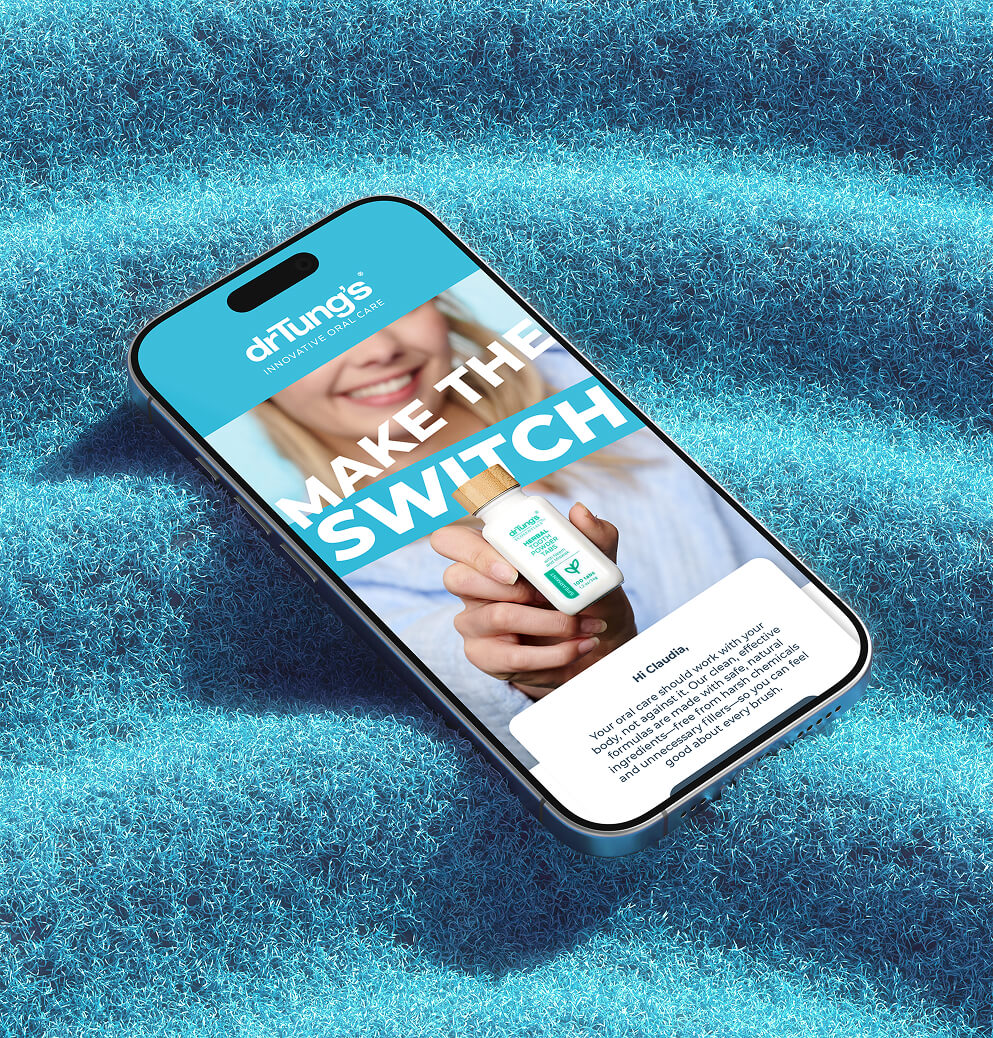

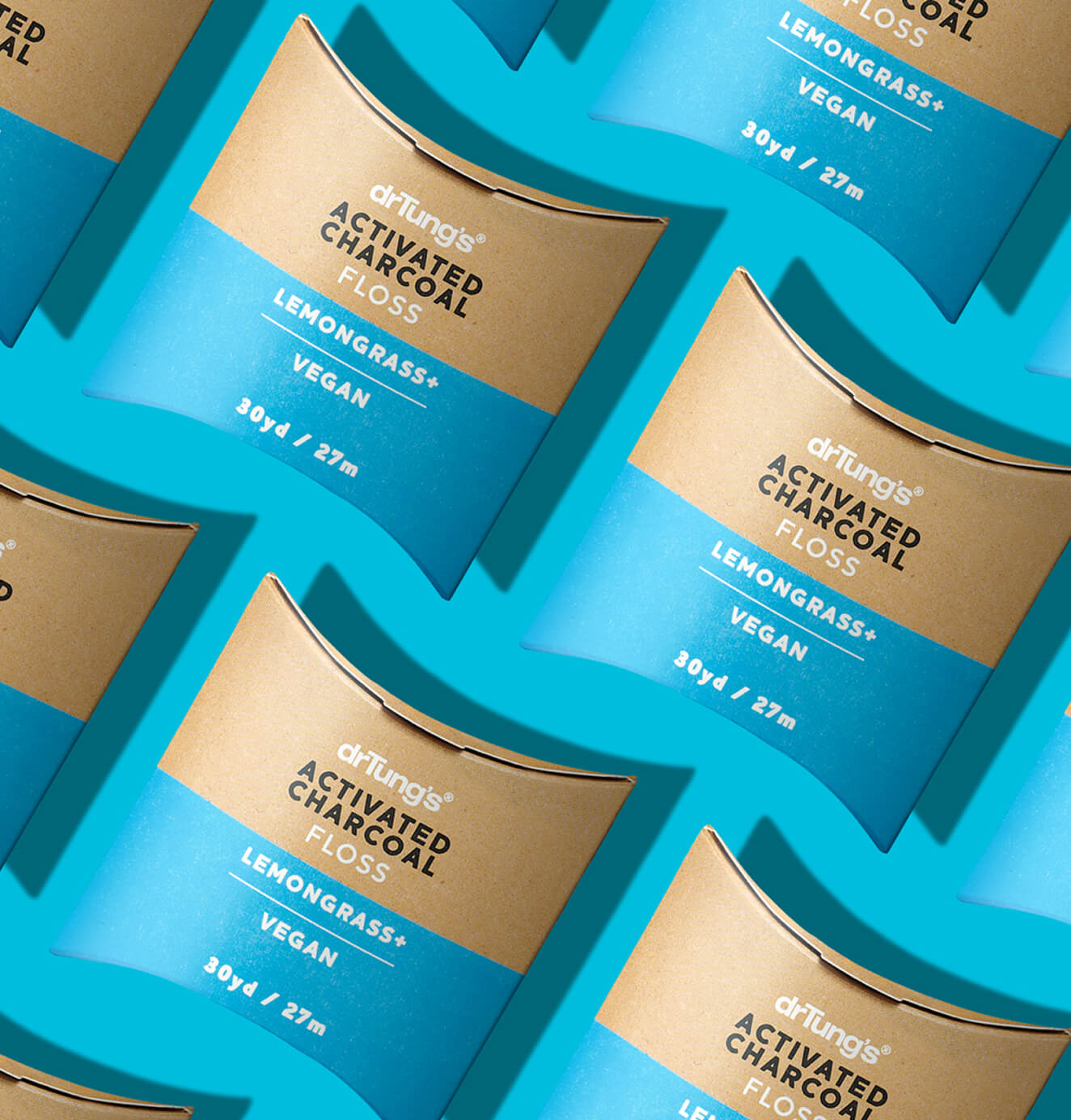




+93%Revenue growth in first 90 days
+144% Increase in attributed revenue


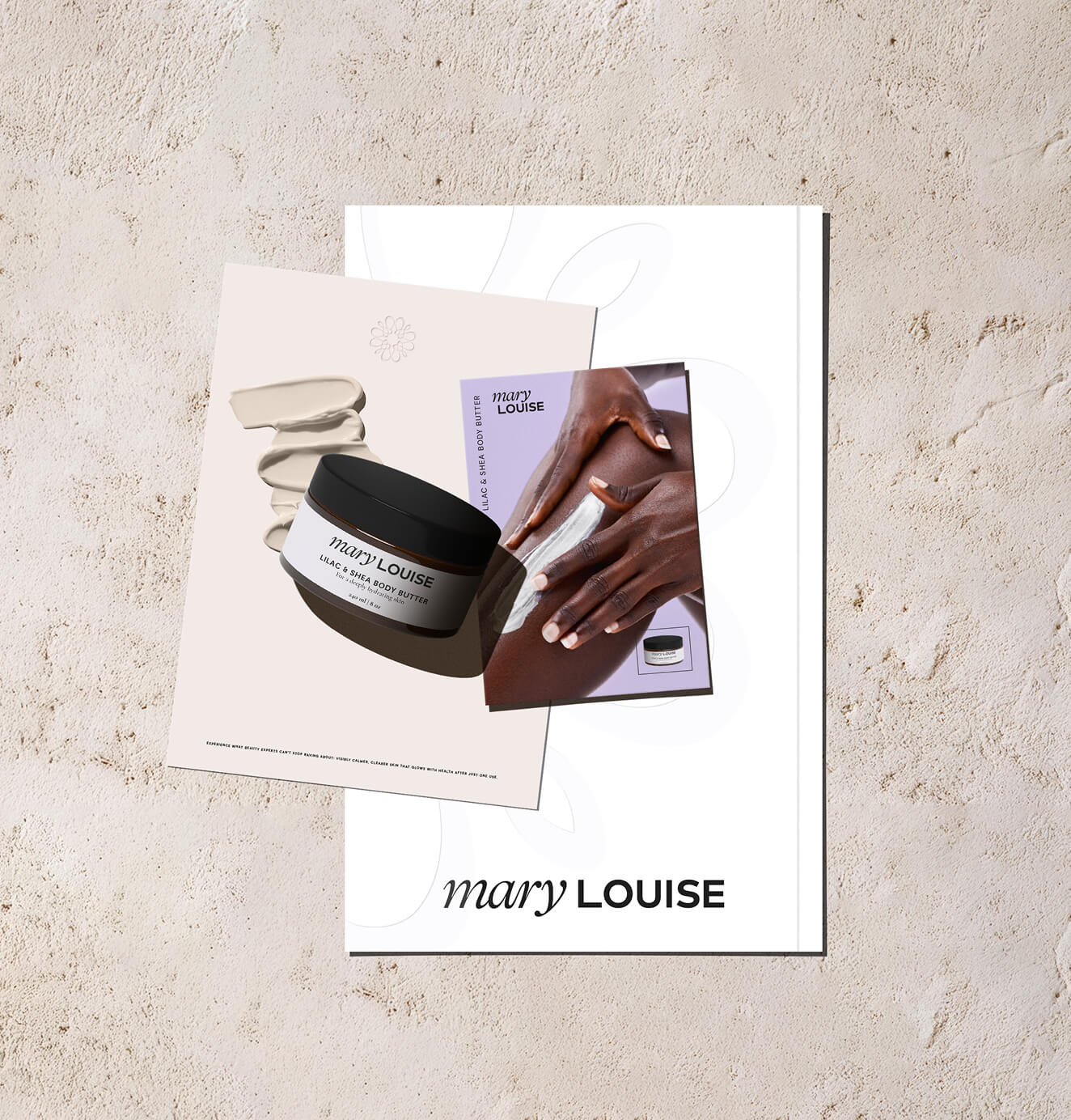





+91%Increase in conversion rate
+46%Increase in AOV


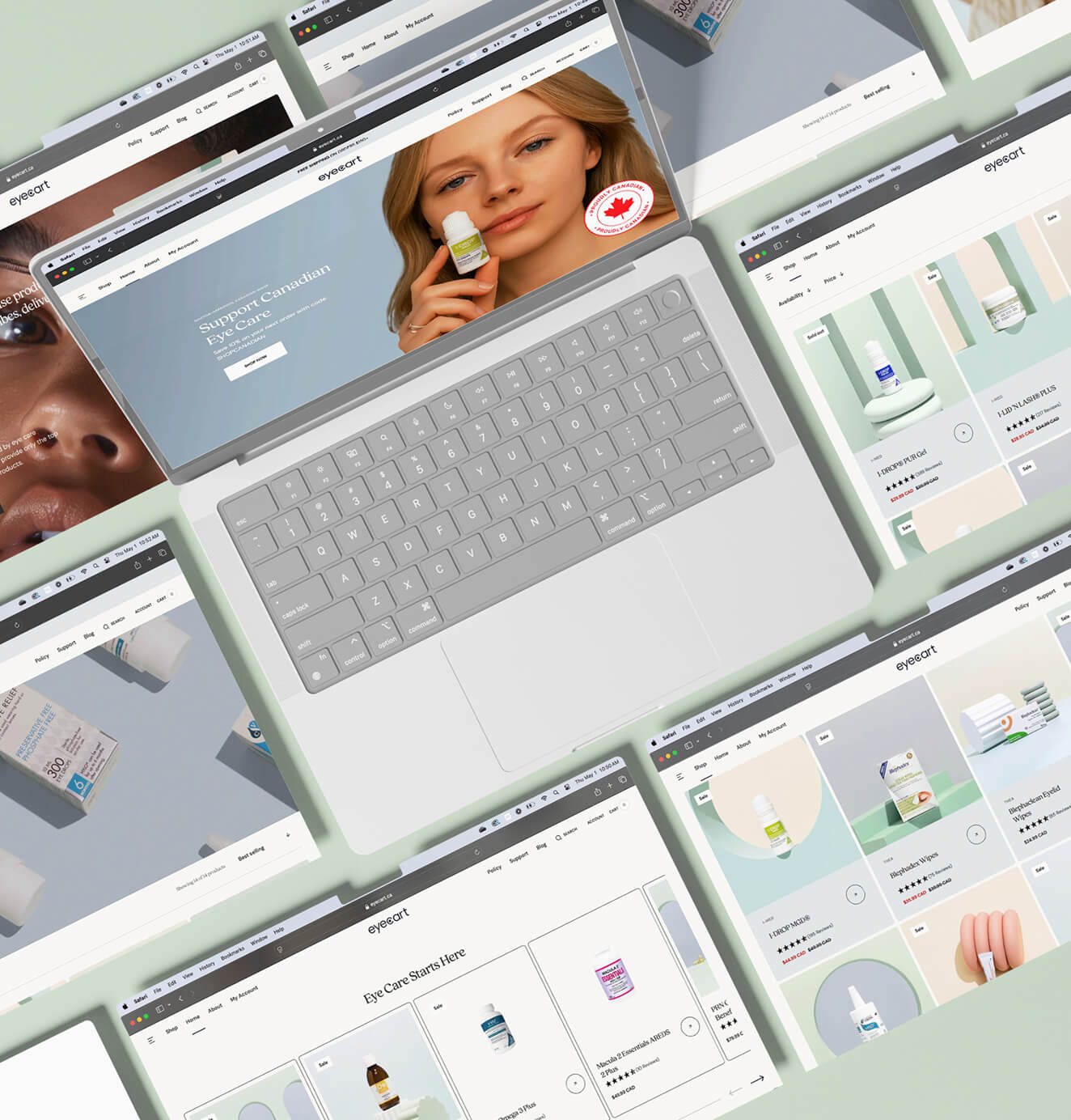





+200%Increase in conversion rate
+688%Increase in attributed revenue












